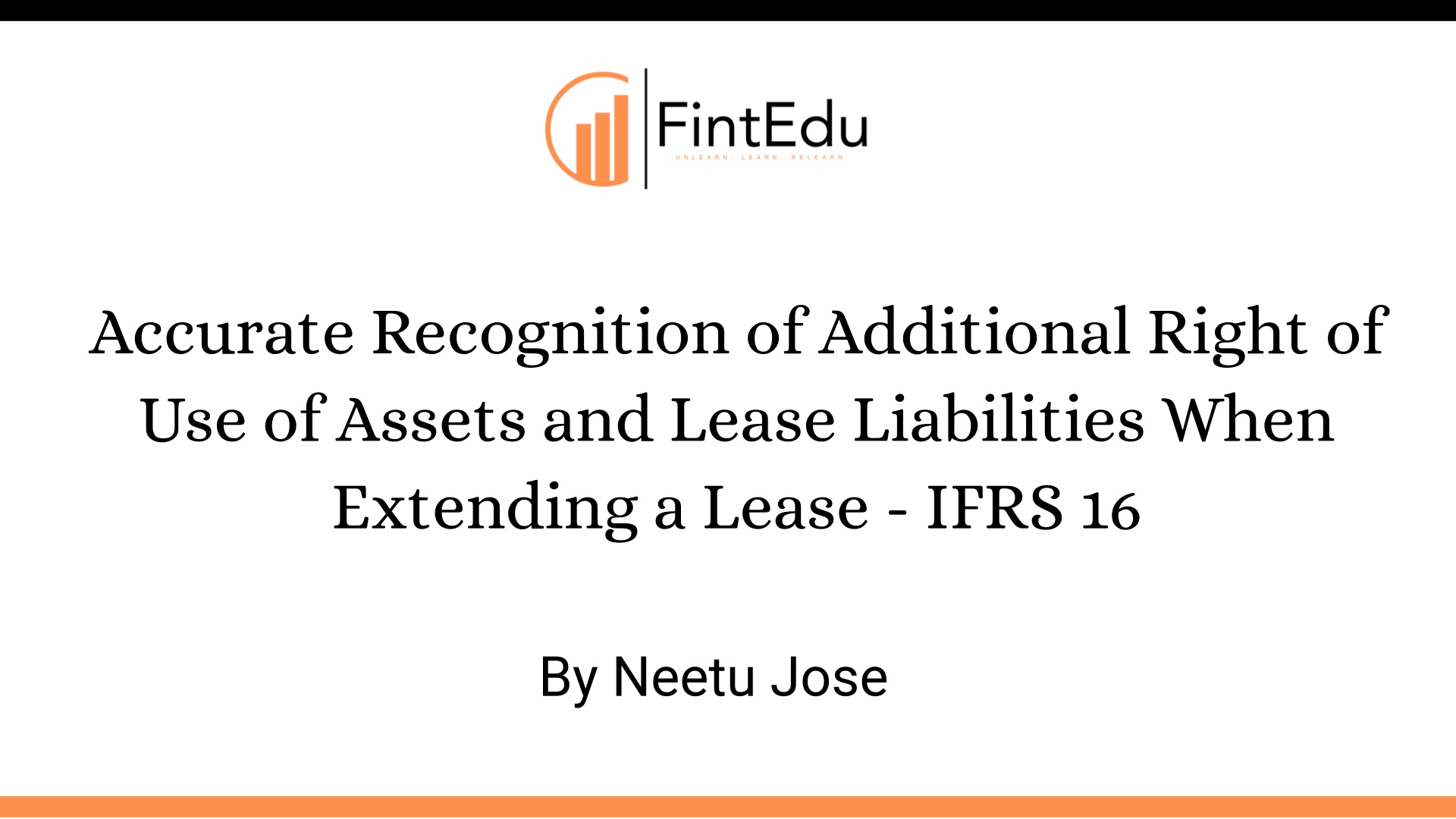LISTEN TO THIS ARTICLE
Extending a lease is a common practice for many entities, but it introduces accounting complexities related to the recognition of Right-of-Use (RoU) assets and lease liabilities. The timing of recognizing these additional assets and liabilities depends on the nature of the lease extension — whether it constitutes a modification of the existing lease or involves entering into a new contract.
If a lessee enters into a new contract with a lessor that effectively extends the lease term of the existing lease without adding the right to use one or more underlying assets, the new contract should be treated as a modification of the existing lease. In other words, extending the contractual term of a lease constitutes a lease modification regardless of whether the extension is achieved through amending the existing lease or entering into a new contract.
Recognizing Lease Modifications:
If a lease extension is considered a modification of the existing lease, the additional RoU asset and lease liability should be recognized on the effective date of the modification. This date occurs when both parties agree to the extension, typically before the start of the extended lease period. Accounting adjustments are made to reflect the extended lease term and any changes in discount rates, ensuring that financial statements accurately depict the impact of the modification.
Treating Lease Extensions as Modifications:
Even when a lease extension is structured as a new contract with the same lessor, it still constitutes a modification of the existing lease. Despite the appearance of a new agreement, the fundamental nature of the lease remains unchanged—the lessee continues to utilize the same underlying asset. Therefore, adjustments to RoU assets and lease liabilities are made on the effective date of the modification, aligning with accounting standards governing lease modifications.
Implications of Incorrect Recognition:
Failing to recognize lease extensions correctly can result in material errors in financial reporting. Incorrectly accounting for a lease extension as a new lease may lead to understated RoU assets and lease liabilities for the affected periods. This inaccuracy not only impacts the financial statements for the current reporting period but also distorts measures such as depreciation, interest expense, and retained earnings in subsequent periods. Thus, adherence to accounting standards and accurate reflection of lease modifications are essential to maintain the integrity of financial reporting.
Disclaimer: Content posted is for informational and knowledge sharing purposes only, and is not intended to be a substitute for professional advice related to tax, finance or accounting. The view/interpretation of the publisher is based on the available Law, guidelines and information. Each reader should take due professional care before you act after reading the contents of that article/post. No warranty whatsoever is made that any of the articles are accurate and is not intended to provide, and should not be relied on for tax or accounting advice.
Contributor
Related Posts

The UAE’s tax and reporting environment is evolving rapidly, especially with the introduction of C...
Read More
Businesses often receive supplier rebates, discounts, or commercial incentives when purchasing fix...
Read More
When a business applies for a VAT refund, most of the focus is usually placed on internal compliance...
Read More